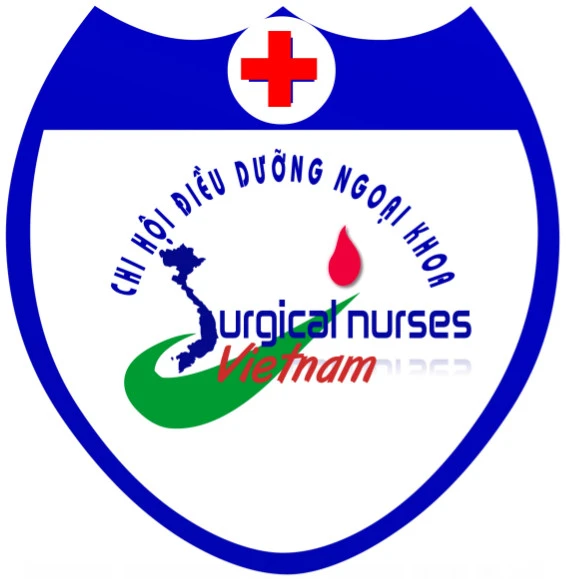|
Perioperative nursing describes the wide variety of nursing functions associated with the patient’s surgical management. Perioperative Nursing is the care of a client or patient before, during, and after and operation. It is a specialized nursing area wherein a registered nurse works as a team member of other surgical health care professionals.
Reasons
- To cure an illness or disease by removing the diseased tissue or organs.
- To visualize internal structures during diagnosis.
- To obtain tissue for examination.
- To prevent disease or injury.
- To improve appearance.
- To repair or remove traumatized tissue and structures.
- To relieve symptoms or pain.
Classifications of Surgical Procedures
There are different classifications of surgical procedures which can be classified as to: urgency, purpose and risk. These classifications can help identify the risk of degree of the surgery.
Based on Purpose
- Diagnostic. These kind of surgeries are done to determine cause of illness and/or make confirm a diagnosis. Examples includes: biopsy, exploratory laparotomy (explorelap)
- Ablative/Curative. These kind of surgeries are performed to remove a diseased part or organ. Examples include: gastrectomy (partial or full removal of stomach), thyroidectomy, and appendectomy.
- Palliative. To relieve symptoms without curing the disease. These include: colostomy, debridement of necrotic tissue.
- Re-constructive. These includes skin graft, plastic surgery, scar revisions. These are done to restore function to traumatized or malfunctioninig tissue and to improve self concept.
- Transplant. To replace organs or structures that are diseased or malfunctioning.
- Constructive. To restore function in congeinital anomalies. Cleft palate repaire (palatoplasty), closure of atrial-septal defect.
- Exploratory. To estimate of the extend of the disease or confirmation of diagnosis. Examples: Exploratory laparotomy, pelvic laparotomy.
- Aesthetic. To improve of physical features that are within normal range. Example: breast augmentation.
Based on Urgency
- Elective. These are kind of surgeries wherein they are pre-planned. Delay of surgery has no ill-effects. These can be scheduled in advanced based on the client’s choice. Examples: tonsillectomy, hernia repaire, cataract extraction, mammoplasty, face lift, and cesarean section.
- Urgent. Surgeries that are necessary for the client’s health, usually done within 24 to 48 hours. Examples: Removal of gall bladder, amputation, colon resection, coronary artery bypass, surgical removal of tumor
- Emergent. Surgeries that must be done immediately to preserve client’s life, body part of body function. Examples: Control of hemorrhage, perforated ulcer, intestinal obstruction, repair of trauma, tracheostomy
Related Concerns
- Alcohol: acute withdrawal
- Cancer
- Diabetes mellitus/Diabetic ketoacidosis
- Fluid and electrolyte imbalances
- Hemothorax/Pneumothorax
- Metabolic acidosis
- Metabolic alkalosis
- Peritonitis
- Pneumonia, microbial
- Psychosocial aspects of care
- Respiratory acidosis
- Respiratory alkalosis
- Sepsis/Septicemia
- Thrombophlebitis: DVT
- Total nutritional support
Assessment
Data depends on the duration/severity of underlying problem and involvement of other body systems. Refer to specific plans of care for data and diagnostic studies relevant to the procedure and additional nursing diagnoses.
CIRCULATION
- May report: History of cardiac problems, heart failure (HF), pulmonary edema, peripheral vascular disease, or vascular stasis (increases risk of thrombus formation)
- May exhibit: Changes in heart rate (sympathetic stimulation)
EGO INTEGRITY
- May report: Feelings of anxiety, fear, anger, apathy
- Multiple stress factors, e.g., financial, relationship, lifestyle
- May exhibit: Restlessness, increased tension/irritability
- Sympathetic stimulation, e.g., changes in heart rate (HR), respiratory rate
ELIMINATION
- May report: History of kidney/bladder conditions; use of diuretics/laxatives
FOOD/FLUID
- May report: Pancreatic insufficiency/DM (predisposing to hypoglycemia/ketoacidosis)
- Use of diuretics
- May exhibit: Malnutrition (including obesity)
- Dry mucous membranes (limited intake/nothing-by-mouth [NPO] period preoperatively)
RESPIRATION
- May report: Infections, chronic conditions/cough, smoking
- May exhibit: Changes in respiratory rate (sympathetic stimulation)
SAFETY
- May report: Allergies or sensitivities to medications, food, tape, latex, and solution(s)
- Immune deficiencies (increases risk of systemic infections and delayed healing)
- Presence of cancer/recent cancer therapy
- Family history of malignant hyperthermia/reaction to anesthesia, autoimmune diseases
- History of hepatic disease (affects drug detoxification and may alter coagulation)
- History of blood transfusion(s)/transfusion reaction
- May exhibit: Presence of existing infectious process; fever
TEACHING/LEARNING
- May report: Use of medications such as anticoagulants, steroids, antibiotics, antihypertensives, cardiotonic glycosides, antidysrhythmics, bronchodilators, diuretics, decongestants, analgesics, anti-inflammatories, anticonvulsants, or antipsychotics/antianxiety agents, as well as over-the-counter (OTC) medications, herbal supplements, or alcohol or other drugs of abuse (risk of liver damage affecting coagulation and choice of anesthesia, as well as potential for postoperative withdrawal)
Diagnostic Studies
- General preoperative requirements may include: Complete blood count (CBC), prothrombin time (PT)/activated partial thromboplastin time (aPTT), chest x-ray. Other studies depend on type of operative procedure, underlying medical conditions, current medications, age, and weight. These tests may include blood urea nitrogen (BUN), creatinine (Cr), glucose, arterial blood gases (ABGs), electrolytes; liver function, thyroid, nutritional studies, electrocardiogram (ECG). Deviations from normal should be corrected if possible before safe administration of anesthetic agents.
- CBC: An elevated white blood cell (WBC) count is indicative of inflammatory process (may be diagnostic, e.g., appendicitis); decreased WBC count suggests viral processes (requiring evaluation because immune system may be dysfunctional). Low hemoglobin (Hb) suggests anemia/blood loss (impairs tissue oxygenation and reduces the Hb available to bind with inhalation anesthetics); may suggest need for crossmatch/blood transfusion. An elevated hematocrit (Hct) may indicate dehydration; decreased Hct suggests fluid overload.
- Electrolytes: Imbalances impair organ function, e.g., decreased potassium affects cardiac muscle contractility, leading to decreased cardiac output.
- ABGs: Evaluates current respiratory status, which may be especially important in smokers, patients with chronic lung diseases.
- Coagulation times: May be prolonged, interfering with intraoperative/postoperative hemostasis; hypercoagulation increases risk of thrombosis formation, especially in conjunction with dehydration and decreased mobility associated with surgery.
- Urinalysis: Presence of WBCs or bacteria indicates infection. Elevated specific gravity may reflect dehydration.
- Pregnancy test: Positive results affect timing of procedure and choice of pharmacological agents.
- Chest x-ray: Should be free of infiltrates, pneumonia; used for identification of masses and COPD.
- ECG: Abnormal findings require attention before administering anesthetics.
Nursing Priorities
- Reduce anxiety and emotional trauma.
- Provide for physical safety.
- Prevent complications.
- Alleviate pain.
- Facilitate recovery process.
- Provide information about disease process/surgical procedure, prognosis, and treatment needs.
Discharge Goals
- Patient dealing realistically with current situation.
- Injury prevented.
- Complications prevented/minimized.
- Pain relieved/controlled.
- Wound healing/organ function progressing toward normal.
- Disease process/surgical procedure, prognosis, and therapeutic regimen understood.
- Plan in place to meet needs after discharge.
Preoperative Phase
Main Article: Preoperative Phase
The preoperative phase begins when the decision for surgical intervention is made and ends when the patient is transferred from the operating room.
Responsibilities included during the preoperative phase are:
Pre-admission Testing
- Initiates initial preoperative assessment.
- Initiates teaching appropriate to patients to patients needs.
- Verifies completion of preoperative testing.
- Verifies understanding of surgeon-specific preoperative orders (e.g. bowel preparation, preoperative shower)
- Assess patient’s need for postoperative transportation and care.
Admission to Surgical Center or Unit
- Completes preoperative assessment.
- Assess for risk for postoperative complications.
- Reports unexpected findings or any deviation from normal.
- Verifies that operative consent has been signed.
- Reinforce previous teaching.
- Explain phase in perioperative period and expectation.
- Develop a plan of care.
In Holding Area
- Assess patient’s status, baseline pain and nutritional status.
- Review chart.
- Identifies patient.
- Verifies surgical site and marks site per institutional policy.
- Establishes intravenous line.
- Administers medication if prescribed.
- Takes measures to ensure patient’s comfort.
- Provides psychological support.
- Communicates patient’s emotional status to other appropriate members of the health care team.
Intraoperative Phase
Main Article: Intraoperative Phase
The intraoperative phase begins when the patient is admitted or transferred to the surgery department and ends when he or she is admitted to the recovery area.
Maintenance of Safety
- Maintains aseptic, controlled environment.
- Effectively manages human resources, equipment, and supplies for individualized patient care.
- Transfer patient to operating room bed or table.
- Position the patient: function alignment, exposure of surgical site.
- Applies grounding device to patient.
- Ensure that the sponge, needle, and instrument counts are correct.
- Completes intraoperative documentation.
Physiologic Monitoring
- Calculates effect on patient of excessive fluid loss or gain.
- Distinguishes normal from abnormal cardiopulmonary data.
- Reports changes in patient’s vital signs.
Postoperative Phase
Main Article: Postoperative Phase
The postoperative phase begins with the admission of the patient to the recovery area and ends with a follow-up evaluation in the clinical setting or at home.
Some of the responsibilities entailed during postoperative phase are:
Communicates intraoperative information
- Identifies patient by name.
- States type of surgery performed.
- Identifies type of anesthetic used.
- Reports patient’s response to surgical procedure and anesthesia.
- Describes intraoperative factors (e.g., insertion of drains or catheters, administration of blood, analgesic agents, or other medications during surgery, occurrence of unexpected events.
- Describes physical limitations.
- Reports patient’s preoperative level of consciousness.
Postoperative Assessment Recovery Area
- Determines patient’s immediate response to surgical intervention.
- Monitor patient’s physiologic status.
- Assess patient’s pain level and administers appropriate pain relief measures.
- Maintains patient’s safety(airway, circulation, prevention of injury)
- Administer medication, fluid and blood component therapy, if prescribed.
- Assess patient’s readiness for transfer to in-hospital unit or for discharge home based on institutional policy.
Transfer to Surgical Unit/Ward
- Continues monitoring of patient’s physical and psychological response to surgical intervention.
- Provides teaching to patient during immediate recovery period.
- Assist patient in recovery and preparation for discharge home.
- Determines patient’s psychological status.
- Assist with discharge planning.
Home or Clinic
- Provides follow-up care during office or clinic visit or by telephone contact.
- Reinforce previous teaching and answer patients and family questions about surgery and follow-up care.
- Assess patient’s response to surgery and anesthesia and their effects on body image and function.
|





